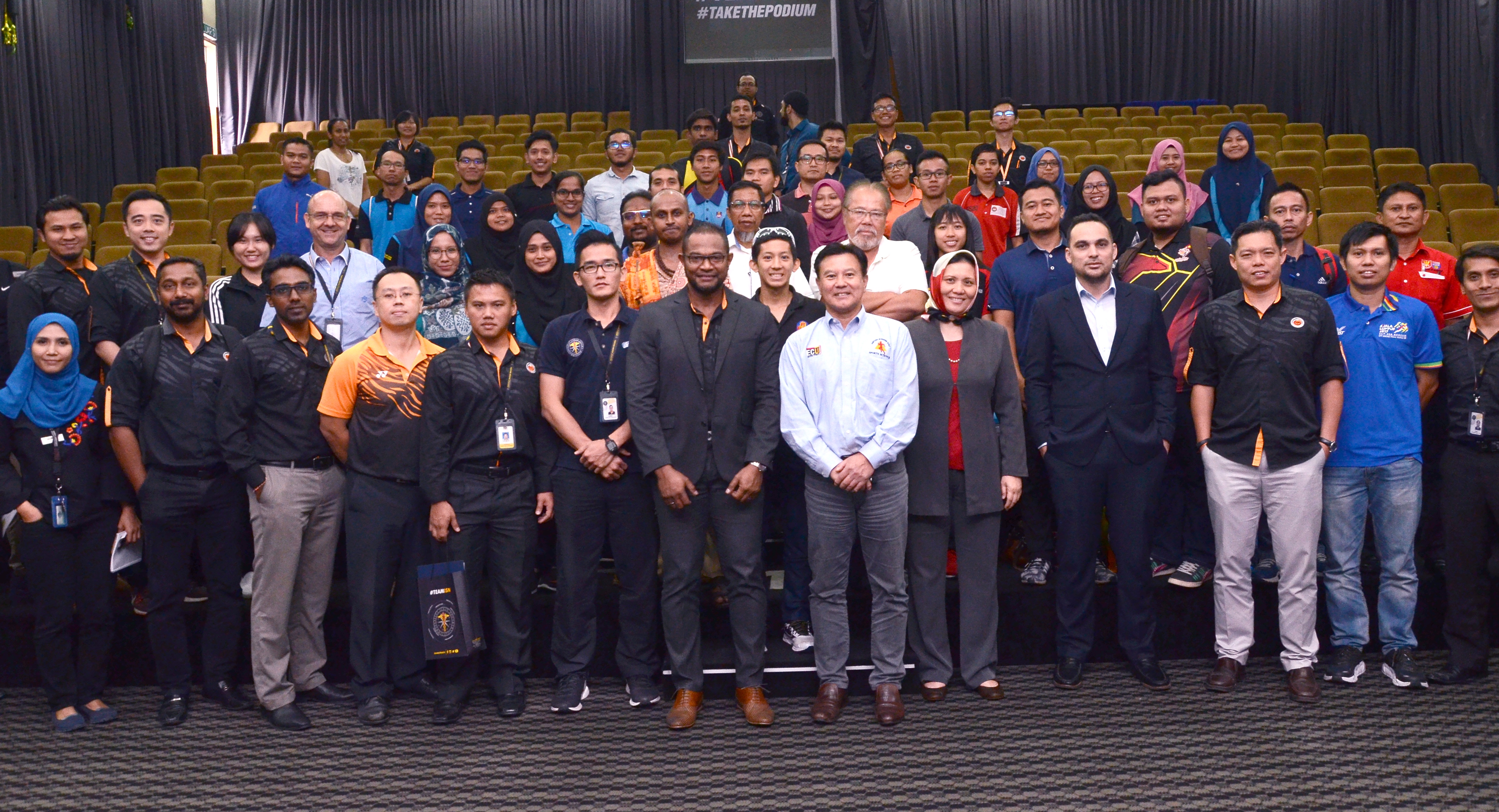Prepared by Suresh Marathamuthu, Professional Education Centre, Research and Education Division (NSI)
01 AUGUST 2017, BUKIT JALIL: National Sports Institute (NSI) organized ‘ISN Lecture Series’ featuring Prof. Ken Nosaka, a well-known speaker from the School of Medical and Health Science, Edith Cowan University (ECU), Australia.
Prof. Ken Nosaka started at ECU as an Associate Professor, and was promoted to a full Professor in December 2009. Over the past 12 years, his main responsibilities in the School were to coordinate Postgraduate and Honours research programs (2007-2014). He received the Vice Chancellor’s Award “Excellence in Research Supervision” in 2008, and “Excellence in Research” in 2012.He published more than 220 peer-reviewed journal articles.
During the ISN lecture series today, he presented two topics, ‘Factor Affecting Endurance Performance in Athletes’ and ‘Eccentric Training to Improve Athletic Performance’.
The Deputy Chief Executive Officer of NSI, Ahmad Zawawi Zakaria was the guest of honour during the programme held at ISN Perdana Hall today.
Below are the summaries of the lecture series :
Topic 1: FACTOR AFFECTING ENDURANCE PERFORMANCE IN ATHLETES
“Endurance” is the ability of our body to exert itself and remain active for a long period of time, as well as its ability to resist, withstand, recover from, and have immunity to injury or fatigue. It is important for both aerobic and anaerobic exercises, and the exercise duration varies according to the type of exertion – minutes for high intensity anaerobic exercise, and hours or days for low intensity aerobic exercise. To perform any exercises, skeletal muscles require ATP to contract, and there are three energy systems that produce ATP; ATP-PC (high power, short duration), glycolytic (moderate power/short duration), and oxidative (low power/long duration). For “endurance performance, oxidative (aerobic) energy system is dominant. It has been well documented that maximal oxygen consumption, lactate threshold, and efficiency are the key factors determining endurance performance. Genetic factors, mental and psychological factors, and environmental factors (e.g., temperature, altitude) also affect endurance performance. It should be noted that muscle-tendon behaviours also determine endurance performance, especially the economy. Knowing these factors of individual athlete is a key for prescribing training to improve their endurance capability. To improve aerobic capacity, not only the training to improve cardio-respiratory functions, but also resistance training is important. It is possible that eccentric exercise training is beneficial for effectively enhancing endurance performance. In the presentation, this is discussed in details.
Topic 2: ECCENTRIC TRAINING TO IMPROVE ATHLETIC PERFORMANCE
When going down stairs, front thigh muscles work to stop the body moving forward, in which “eccentric contractions” are performed. In eccentric contraction, contracting muscles are lengthened by greater external load than muscle force, in contrast to concentric contraction in which muscles are shortened. The exercise consisting of mainly eccentric contractions is called “eccentric exercise.” Less oxygen is required for going down than going up stairs, so eccentric exercise is easier to perform than concentric exercise. There are many kinds of eccentric exercises in relation to the intensity and exercise mode; maximal versus submaximal, isokinetic versus isotonic, and eccentric only versus a combination of eccentric and concentric contractions. Velocity, number (repetitions, sets), and range of motion of the contractions also affect the training outcomes, and frequency of the training as well as the status of the muscles receiving eccentric contractions influence the effects.
One negative aspect of eccentric exercise is that it may induce muscle soreness that develops several hours after exercise, which is referred to as delayed onset muscle soreness (DOMS). However, DOMS can be minimised by pre-conditioning exercise in which low-intensity eccentric contractions are performed. Even if DOMS is induced, it is much reduced in the subsequent exercise sessions, when eccentric exercise is repeated. Thus, possible DOMS should not discourage people from starting eccentric exercise. It does not appear that muscle damage is a factor for the positive effects of eccentric exercise training on muscle adaptations.
In the presentation, some of eccentric training studies are introduced, and potential effects of training focusing on eccentric contractions are discussed.






